*Brand archetype
Brand Archetype Caregiver: caring friend to all
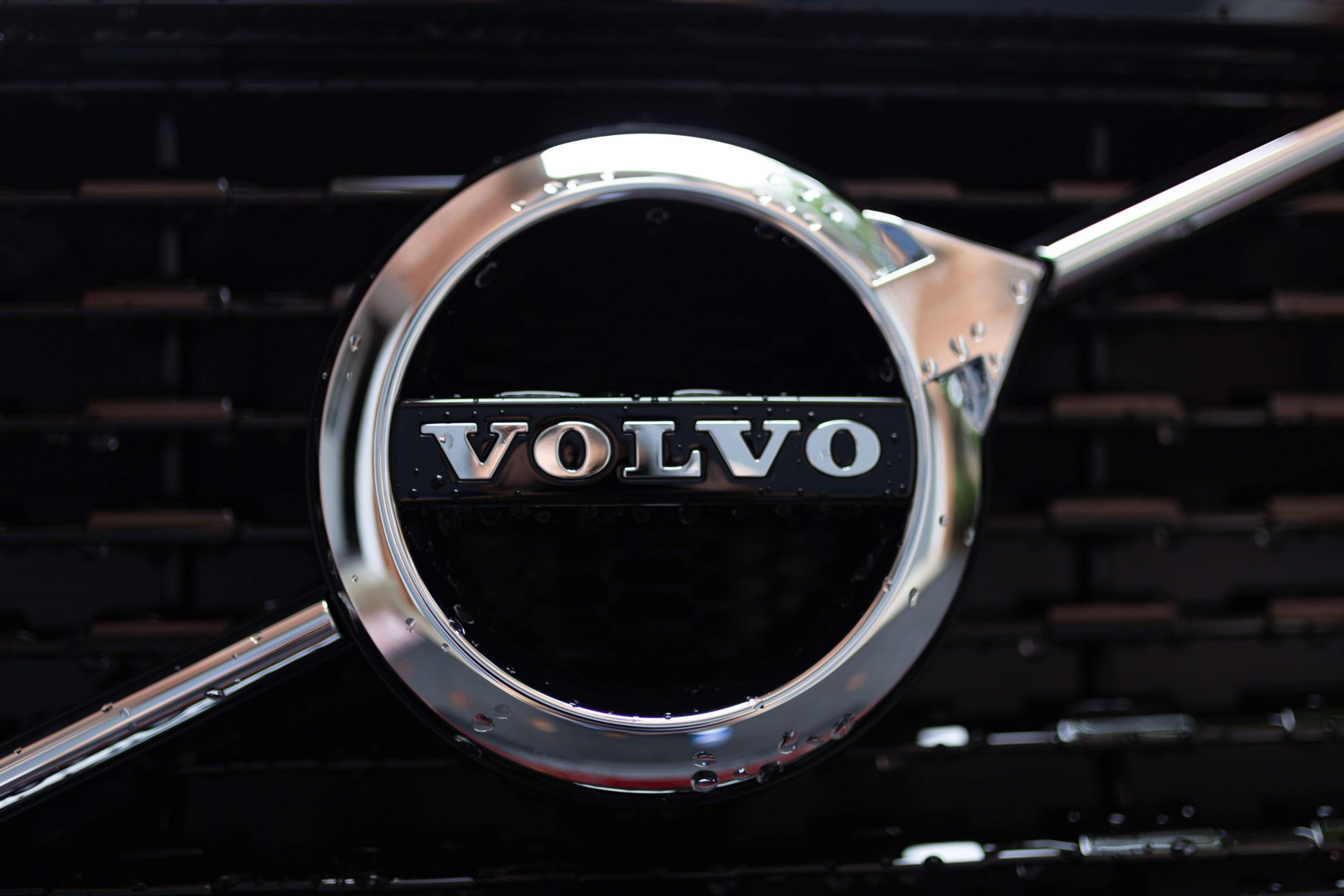
Are you caring and protective, even when customers don’t ask for it? The Caregiver brand archetype prioritizes the customer’s needs, sometimes even at the expense of its own interests. This brand archetype is well-suited for many non-profits such as the Red Cross, but is also suitable for commercial institutions. In this blog, we explain who the Caregiver is, how this brand archetype behaves, and what the benefits and pitfalls are. We also provide some great examples: Volvo, Nationale Nederlanden, and Danone.
Treat others as you would like to be treated.
Brand archetype Caregiver: reliable and caring

Volvo is the Caregiver brand in the automotive industry.
A mother, a teacher, or even the Good Samaritan are just a few images that come to mind when thinking about the Caregiver brand archetype. The Caregiver takes care of others, wants to protect people and is willing to sacrifice themselves when necessary. The Caregiver’s own interests are subordinate to those of others. This is one of the most powerful brand archetypes because it reminds us of our relationship with our own Caregivers.
Instability and problems, especially for others, are the Caregiver’s biggest fear. A safe, orderly world where everyone takes care of each other is the goal. “Actions speak louder than words,” and so the Caregiver takes care of and protects the people around them. From employees and (potential) customers to other stakeholders and the wider society, the Caregiver wants to help everyone. She finds satisfaction in making a positive contribution to the world around her, no matter how small, and is a stable factor. You can rely on the Caregiver.
However, there is indeed a power dynamic at play. The Caregiver gives what someone needs, whether asked for or not. Like parents facing difficult choices, the decision the Caregiver makes is sometimes not what someone wants to hear. The Caregiver gives what someone needs according to their conscience, even if it is not in her own interest. The conventional economic doctrine that places self-interest first is not suited for this brand archetype.
This is why the Caregiver is often attributed to non-profit organizations and charitable institutions. But, is this brand archetype not suitable for commercial activities? Certainly not! Like any other brand archetype, there are different styles of the Caregiver. It is important to keep the core in mind and see if it aligns with your brand, but that doesn’t mean everything has to be an exact match.
Brand Archetype Caregiver: Volvo
The Caregiver brand archetype example that we always use is Volvo. The brand that puts safety first, for example, developed the three-point seat belt in 1959. The seat belt that we all know and now take for granted was developed by Volvo to reduce the number of traffic fatalities and injuries. And with success, as the seat belt reduces the impact by 50%. Reason enough for Volvo not only to use the three-point seat belt – protected by a patent – in its own cars but also to share this knowledge with other car manufacturers.
In 2020, greater traffic safety is still Volvo’s goal, and the Swedish company therefore shares its data in this area with other manufacturers. Typical of a Caregiver brand archetype is that the interest of the target group and, in the case of Volvo, even the entire driving population, is placed above economic interest. In a recent commercial for its hybrid SUVs, Volvo also addresses safety more broadly, namely the (ecological) safety of future generations.
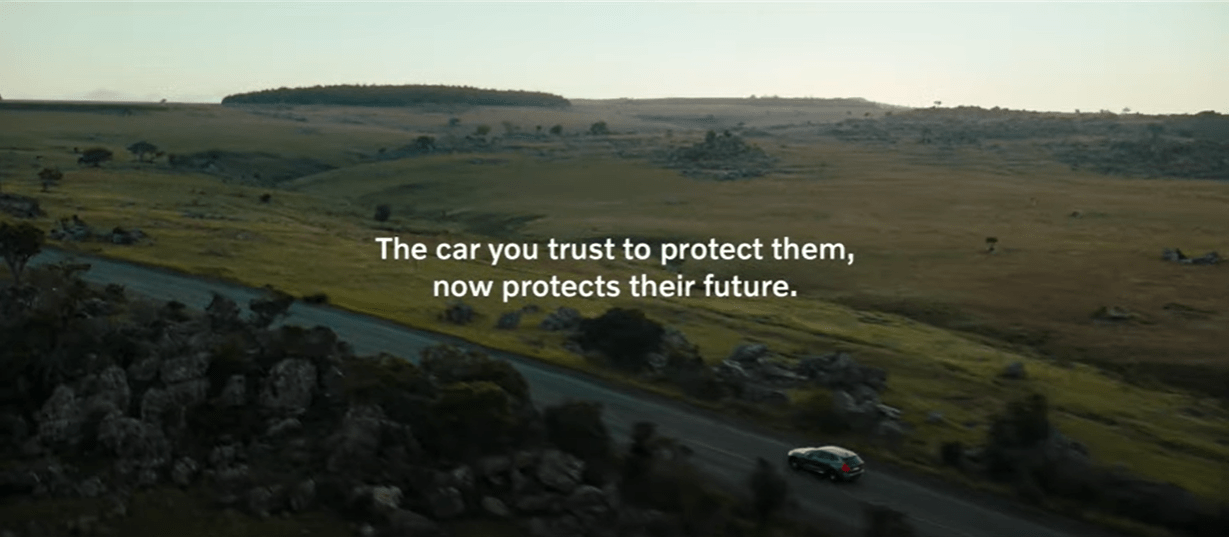
Protection goes beyond the driver, customer or even the passengers for Volvo. This core value of the Caregiver is extended by Volvo towards a safe world.
3 levels of the Caregiver brand archetype
Just like in people, there are also different types of organizations, brands, and brand archetypes. The Caregiver has 3 different levels:
Level 1 Caregiver – caring for the immediate environment
These Caregiver brands are mainly concerned with caring for and nurturing their immediate environment, “our people.” The focus is on customers and perhaps employees or relationships, but this Caregiver is less concerned with the world around them.
Level 2 Caregiver – balance
Caring for others and themselves, these Caregiver brands know how to strike a balance. Volvo operates at this level. They try to make their customers’ lives easier and safer but think beyond their own customer group and try to make driving safer for everyone.
Level 3 Caregiver – the pure altruist
Focused on the world around them, this Caregiver, as a true altruist, only has eyes for the bigger picture. They care for the world and try to prevent problems as much as possible, without any self-interest. This is the level of the Caregiver that you would expect from non-profit organizations that work for the benefit of humanity and society.
Brand archetype Caregiver: Red Cross
The following mission statement is from a very different Caregiver brand, namely the Red Cross:
‘Preventing and alleviating human suffering anywhere, protecting life and health, and ensuring respect for all human beings.’
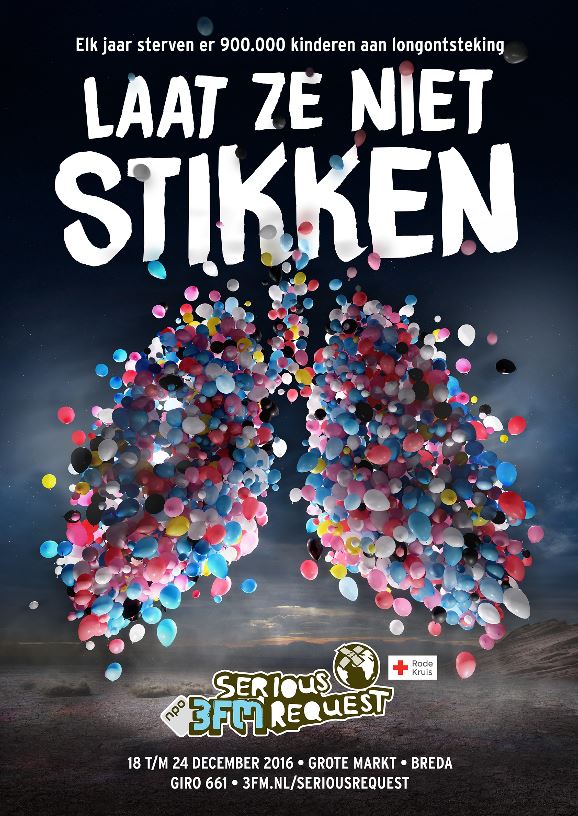
We explain this mission because it directly touches on the core of the Caregiver brand archetype, namely preventing and alleviating instability and problems. Additionally, the Red Cross is, of course, an organization without (economic) self-interest. While the Caregiver brand archetype certainly fits with commercial institutions, this brand archetype is definitely one to consider if your brand is a foundation, association, or other non-profit organization.
Another aspect of the Red Cross that is very close to the Caregiver is the goal of a world in which everyone takes care of each other. The Red Cross literally calls itself the “largest aid network in the world,” and what about large events like Serious Request? An annual concept to raise money for projects of the Dutch Red Cross, where people are literally called upon to take care of each other, by creatively raising money and requesting music for the problems of people all over the world. The Caregiver brand archetype puts the group first, but is also truly a group. They don’t believe in ego, but do it together.
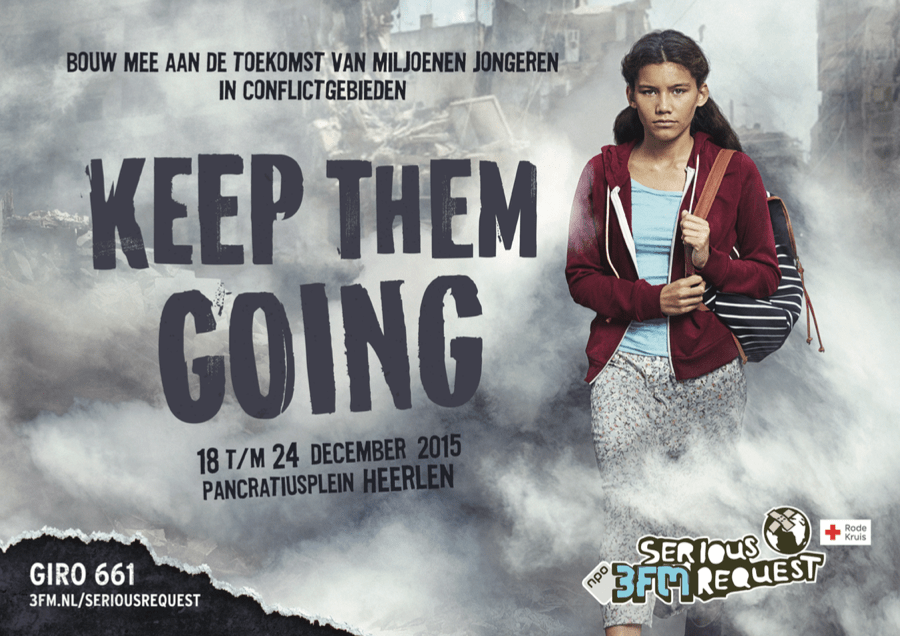
The Red Cross is a Caregiver organization that puts aside its own interests for its mission and the interests of its target group. The message calls for a world in which everyone takes care of each other, and the organization itself will hardly be in the picture, as evidenced by the logo that appears minimally at the bottom.
Characteristics of the Caregiver brand archetype
If the Caregiver brand archetype fits your brand, you should recognize at least some of the following characteristics:
- The difference between your brand and the competition?
- Your excellent customer service.
- Your services or products are associated with care or supporting families.
- You offer services or products in healthcare, education, or other caring sectors.
- Your products or services keep people connected and help people take care of each other. Or, you enable people to take care of themselves.
- Your brand is a charity, non-profit, or very involved in charity and non-profit organizations.
Example of the Caregiver brand archetype in business services: Nationale Nederlanden
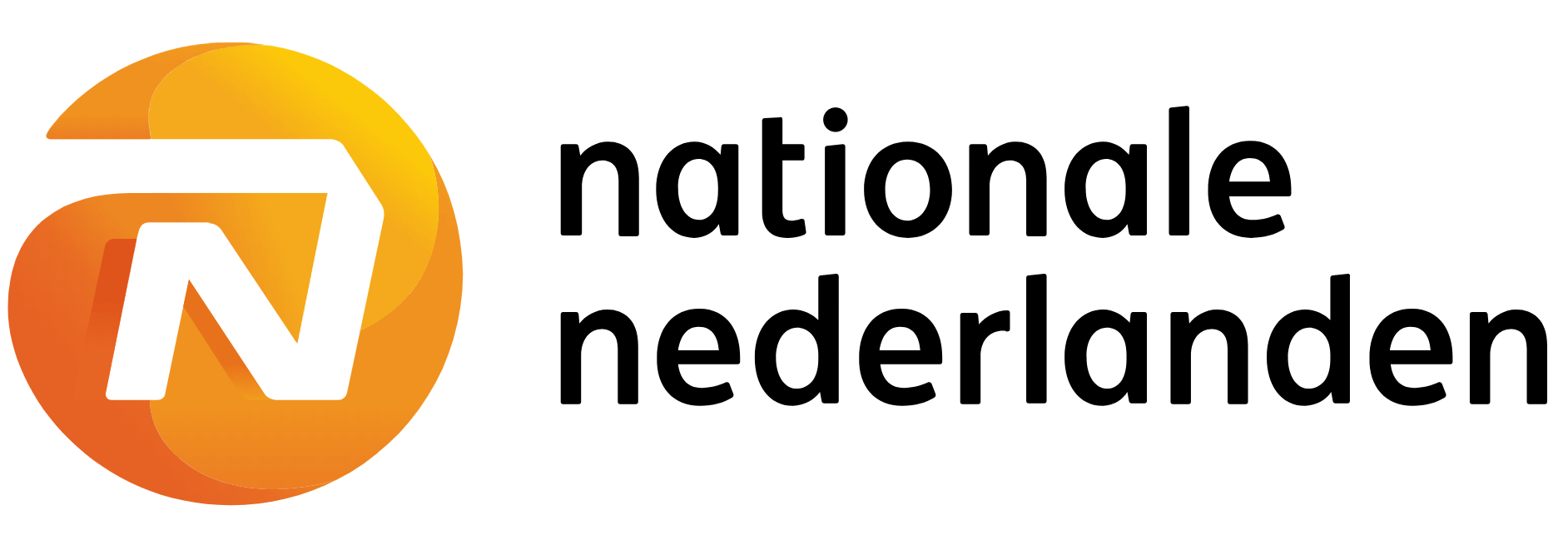
Nationale Nederlanden is a well-known brand in the Netherlands. But did you know that the company started out as an insurer against fire damage? In 1845, fire was one of the biggest dangers, so the founders of Nationale Nederlanden not only started with fire insurance but also helped set up fire brigades and taught people how to prevent fires. Protecting people not only from harm, but also wanting to prevent problems, is characteristic of a Caregiver. With this, Nationale Nederlanden put the interests of customers and society above its own interests.
Nationale Nederlanden was also the first insurer to calculate the risks and premiums of life insurance mathematically, making insurance affordable for a larger group.
Today, Nationale Nederlanden offers various financial products, from insurance, mortgages, and loans to pension accumulation for individuals and businesses. The company speaks of ‘helping people secure their financial future’ and ‘protecting what is most precious to them’. A good example of this philosophy and the Caregiver brand archetype is the Foundation from debts to opportunities, an initiative of Nationale Nederlanden that has been working since 2008 to promote financial self-sufficiency in the Netherlands. The foundation is part of the overarching social program of Nationale Nederlanden, NN Future Matters.

As an insurer, Nationale Nederlanden protects employees and employers with various financial products.
Since 2016, the ‘There is only one Dutch person like you’ campaign has been running. Remarkably for a Caregiver brand, Nationale Nederlanden addresses the individual here. Yet, it fits very well with a Caregiver with the closing sentence ‘what is important to you is important to us’ and the personal stories and goals highlighted in various advertisements. Putting the customer’s interests first, Nationale Nederlanden has only a supportive role in securing these interests.
Benefits of the Caregiver
As a Caregiver, you take care of customers. You have their best interests at heart, prioritize their interests, and actively think with them. Customers expect the steps you take and the products or services you offer to positively contribute to their lives. If that is the conviction, why not go for the latest product? Whether it’s a new type of yogurt or a car with new technologies, with a successful Caregiver positioning, the customer will accept and adopt your new ideas, products, and services more quickly.
Pitfalls of the Caregiver
The danger of a Caregiver is perhaps obvious, because if you put someone else first, where do your interests go? A pitfall of the Caregiver is that he is so busy taking care of the target group that he forgets himself. When is the sacrifice too great, where is the limit? And if you get fixated on the target group, can you still protect it?
For a Caregiver, it may be more important than ever to clearly establish the goals, wishes, and boundaries before losing oneself in the desire to keep the target group safe and protected.
Industrial brand archetype Caregiver: Danone
Literally feeding people is the goal of our example of a Caregiver brand archetype in the industry. The French food producer Danone is mainly found in the refrigerated shelves in the Netherlands with brands such as Activia, Actimel, Alpro, and the baby and child nutrition of Nutricia. It is less well-known that the company was founded in 1919 to combat intestinal infections in children with special yogurt cultures. Later, the yogurt products were also sold in Spanish pharmacies before they ended up in supermarkets.
Danone still focuses on healthy foods, with an emphasis on responsibly produced dairy products for all ages. With the mission “Bringing health through food to as many people as possible” and the slogan “One Planet. One Health.”, humans and the planet are connected. With its products, Danone offers healthy food and promotes the adoption of healthier, sustainable eating and drinking habits, for both humans and the planet.
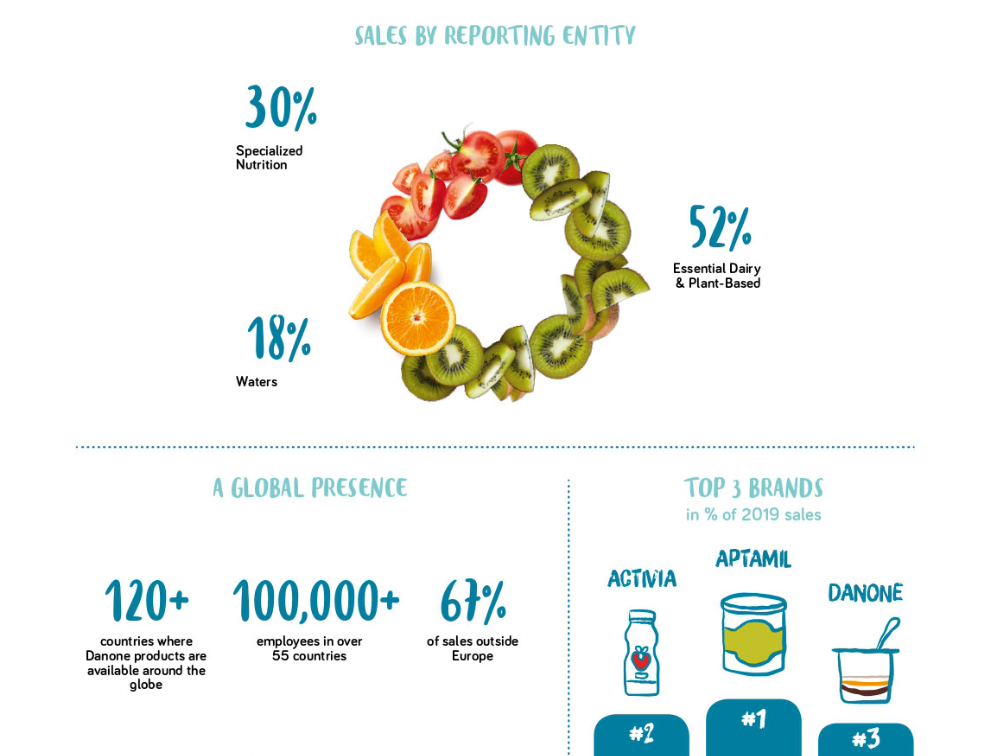
Image from Danone report, also highlighting healthy food products. Combined with a simple appearance that fits a Caregiver brand.
The goal of Danone is to protect our health and planet. How do we see that reflected in the various brands? Activia uses the slogan ‘Feeling good starts from within’ and supports your bowel movement, with Alpro ‘Start the day your way’ you take the first step towards your new (plant-based) lifestyle. With healthy nutrition from Nutricia, you start on a healthy future and get advice and support during pregnancy or in raising babies and toddlers. With these three completely different brands, the customer is central and the Danone brands offer support, both in word and image. A healthy lifestyle is made easier and the brands think along with you. Not focused on a problem, but on solutions even before you may be aware of a problem.
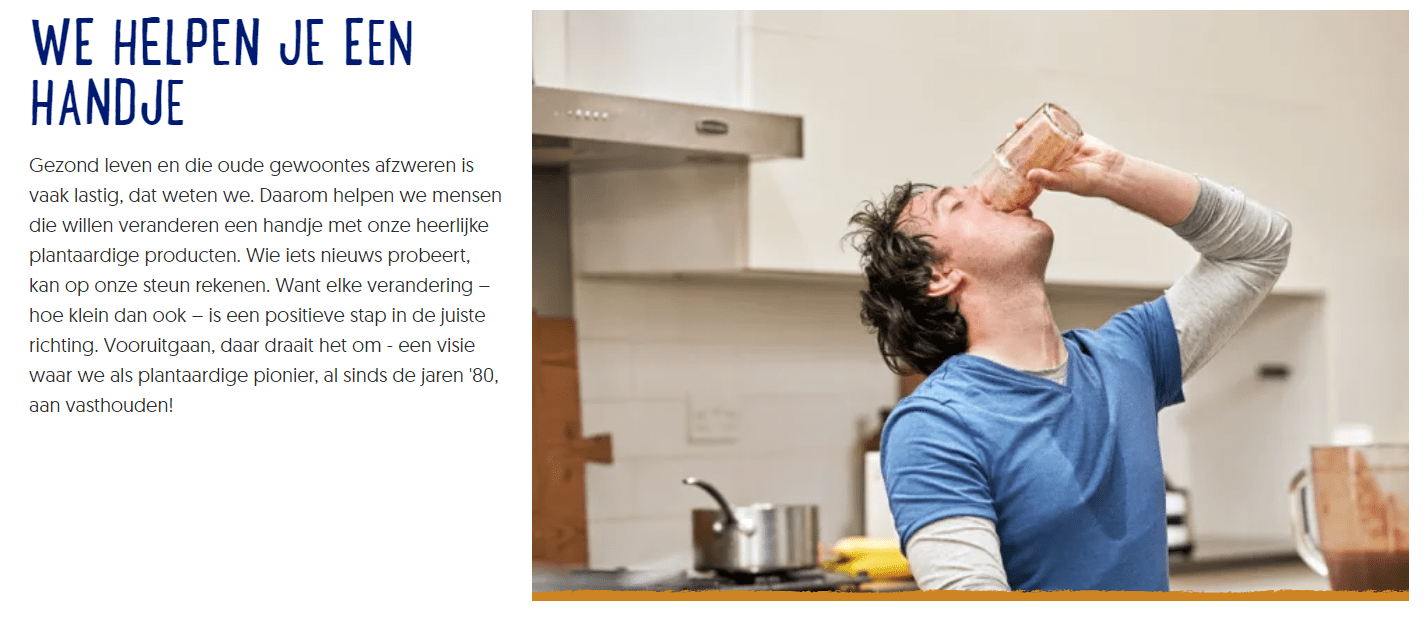
Alpro helps its customers choose a healthier lifestyle. They make the decision to take a step in “the right” direction a little easier. Characteristic of the Caregiver is the caring nature, the (unsolicited) advice, and the value judgment attached to “the right” choice.
Marketing of the Caregiver Brand Archetype
A typical image of the Caregiver is a father leaning towards a child for explanation or guidance. The Caregiver is conservative in appearance and styling, often using primary colors and placing people at the center of marketing communications. The Caregiver doesn’t say that they care about people but shows it, for example by presenting solutions such as customer cases, tips, and advice. The Caregiver prefers to ensure that you know how to solve a problem, or prevent it altogether, even before you have a problem.
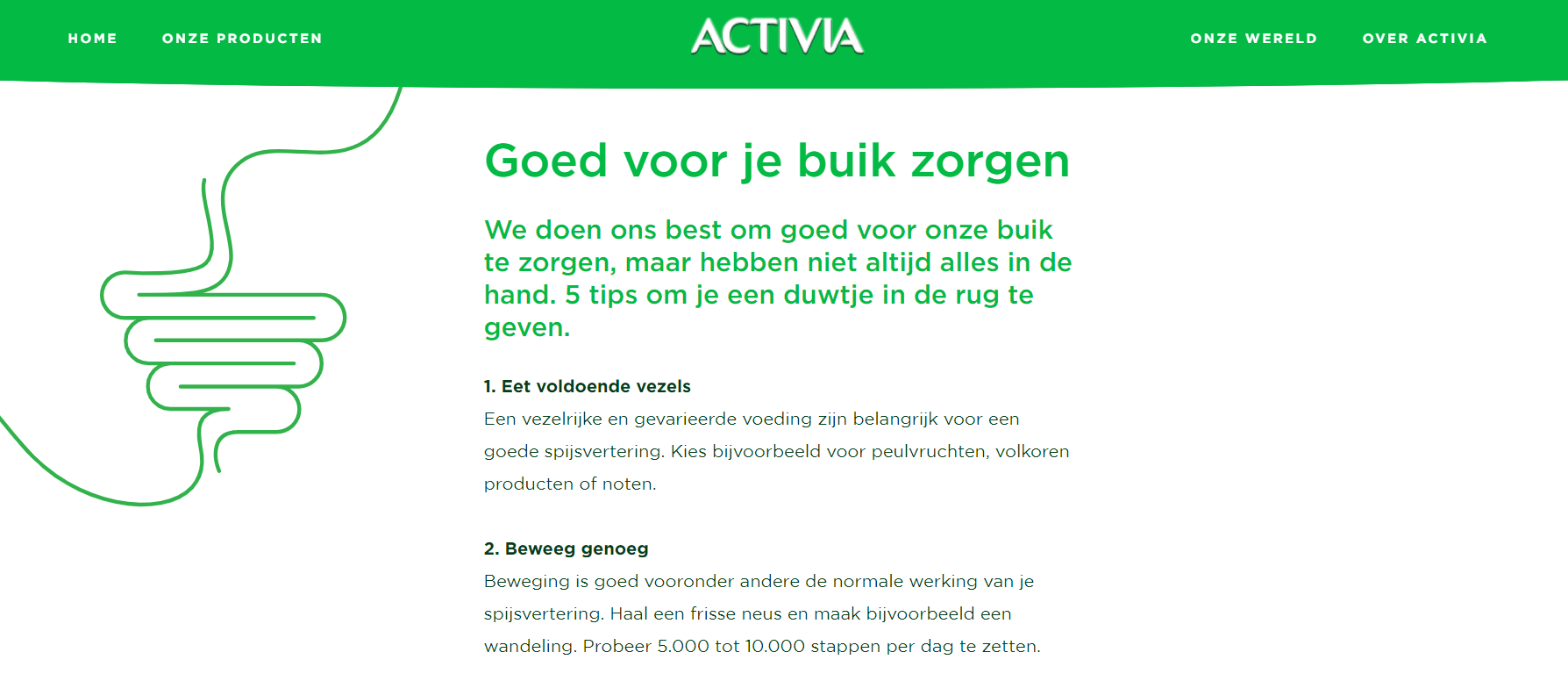
The tips from Activia are an example of marketing by a Caregiver. With tips, the Caregiver demonstrates that they are thinking along with their customers and care about them, especially when the tips are not all related to their own product but are related to the customer’s goal
Differences and similarities between the Caregiver, Ally, Innocent, and Lover
If you recognize a lot of the Caregiver but it still doesn’t quite fit your brand, maybe one of the following brand archetypes is better suited:
The Caregiver and the Ally are very close to each other. As an ally or ‘the common man’, this brand archetype also has a desire for a safe existence. The difference is that the Ally is mainly concerned with ‘belonging’ and therefore seeks a sense of belonging to a group. He is less concerned with the people around him and caring for others, and more with finding a group that he fits into.
The Innocent often enjoys the same associations and can resemble a Caregiver in her expressions. But when we look at the core of this brand archetype, we see a very different motivation. The Innocent is looking for a harmonious life, an ideal world. Her motives are determined by an inner compass of norms and values, whereas the Caregiver is guided by influences from her target audience.
The Lover is also known as a reliable partner who reduces risks and fears. She does this by searching for the beautiful things, deep relationships, and the positive. The Lover does not necessarily care for others but is instead looking for a long-lasting, loyal relationship with customers in which they pursue pleasure, comfort, and quality together.
Want to know more about brand archetypes or positioning? Read on our page about brand archetypes, where you can learn everything about the various brand archetypes.